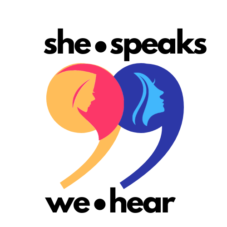Personally whilst growing up (and still today) I could very rarely identify with the Muslim women that were always being spoken about in the media and by politicians. Perhaps, this is reflective of my somewhat privileged position, but the Muslim women that I knew were motivated and strong both in their careers and in the home, and were supported by those in their lives. In short the Muslim women I knew were educated and intelligent and very much able to speak their own mind, albeit their voices are not always heard.
This disconnect between my own experiences and popular discourses about Muslim women also significantly influenced me in my studies. Whilst I was at school, in 2004, the French authorities passed the ban on ‘ostentatious faith symbols’ in state schools, or as I soon realised the French authorities had banned young Muslim women from wearing the headscarf at school. This ban was somewhat paradoxical and nonsensical since it was estimated that only around 600 young Muslim women wore the headscarf at the time of the ban¹, so why was there such hysteria over what some women in France wear?
“Time and time again each of these so-called affaires consistently neglects the plethora of Muslim women’s voices and adds to growing Islamophobia directed towards Muslim women.”
The French obsession with Muslim women’s dress has ‘Orientalist’ roots (see the image above). The specific fixation on Muslim women’s appearance in educational establishments dates back to 1989. However, prior to the implementation of the ban on the headscarf in schools in 2004, a commission was founded to investigate the potential prohibition. Personally, as a young student I found it problematic that the appointed representative of diversity and Muslim women’s voices was Fadela Amara. The former head of the French feminist organisation Ni Putes, Ni Soumises² was known for her typically French republican feminist stance, one that subscribes to current French secular positions that seek to remove the public visibility of faith, especially that of Islam. In her book also entitled Ni Putes, Ni Soumises, Amara describes the headscarf as a mark of oppression, submission, gender inequality, anti-feminist and anti-French. In short, Amara’s position negates the rich complexity of French Muslim women’s identities and multiple positions that they occupy and instead reduces visibly identifiable Muslim women as women who allegedly need ‘saving’.
The 2004 ban is only one of many legislative and normative measures in France that limit Muslim women’s dress; the 2010 anti-niqab law, controversies surrounding Muslim women’s headscarves in universities, long skirts in schools, what mothers wear when picking up their children from school, or the ‘burkini’ hysteria that has swept across France in recent weeks represent the ever-growing French obsession with Muslim women’s bodies.
Time and time again each of these so-called affaires consistently neglects the plethora of Muslim women’s voices and adds to growing Islamophobia directed towards Muslim women. In short, these debates obsess over Muslim women, yet they rarely afford these women a platform and instead they often contribute to worsening Muslim women’s everyday lives in France.
Recently I completed my PhD investigating the nature of Muslim women’s political participation in France and francophone Belgium. My research was based on 29 interviews with women who self-identify as Muslim and participate in variety of political activities. Among the women who took part in the study there were members of the European Parliament, national and regional parliamentarians, local councillors, trade union activists and those who took part in grass roots political activism.
This research presented an opportunity to showcase not only the nature of the political participation undertaken by Muslim women in France and Belgium, but also gave a platform for their voices. Upon reflection, I found that Muslim women encounter numerous obstacles to their political participation, and that these distinctly shaped by the spaces in which they seek to participate and also the evolving normative structures in their respective context. I was struck by the remarkable resilience of the women that shared their experiences with me – they always found ways and means of participating in politics and this was often driven by a desire to better the communities which they were very much part of. Hearing Muslim women’s voices, be it through academic research or more accessible blogs like ‘She Speaks, We Hear’ is a tool to bring about social cohesion and improve understanding of Muslim women, to move away from the hysteria that surrounds them and to see that these women, in all their diversity, are very much part of Western society.
by Amina Easat-Daas
¹ See Hargreaves, A. G. (2007). Multi-Ethnic France: Immigration, Politics, Culture and Society. Abingdon, Routledge.
² Ni Putes, Ni Soumises translates as Neither Whores, nor Submissive (translation my own). The NGO was founded in response to the violence directed towards women in ghettoised French suburbs. Ni Putes, Ni Soumises is also the title of a book written by Fadela Amara (Amara, F. (2004). Ni Putes Ni Soumises. Paris, Editions La Découverte.)
Image Courtesy of The image above is taken from http://information.tv5monde.com/sites/info.tv5monde.com/files/styles/large_article/public/assets/images/288865_vignette_devoilement2.jpg?itok=zERgiXqm. The image was commonly used in French predominantly Muslim colonies. The text reads N’êtes-vous donc pas jolie? Dévoilez-vous which translates So are you not beautiful? Remove your veil.
Amina Easat-Daas has recently completed her PhD at Aston University, Birmingham, UK. Her doctoral research is entitled Muslim Women’s Political Participation in Francophone Europe: A Comparative Analysis of France and Belgium, and it specifically examines the motivations, opportunities and barriers to political participation by Muslim women in the two cases. Amina’s broader research interests include the study of Muslim political participation and representation, Muslim women’s dress, ‘European Islam’ and anti-Muslim prejudice or Islamophobia in Europe, and has several forthcoming book chapters and articles related to these topics. Amina has worked alongside prominent European NGOs. She regularly participates in academic conferences throughout the UK and internationally, and has also previously presented some of her work related to anti-Muslim prejudice to the European Parliament in Brussels. http://aston.academia.edu/AminaEasatDaas
